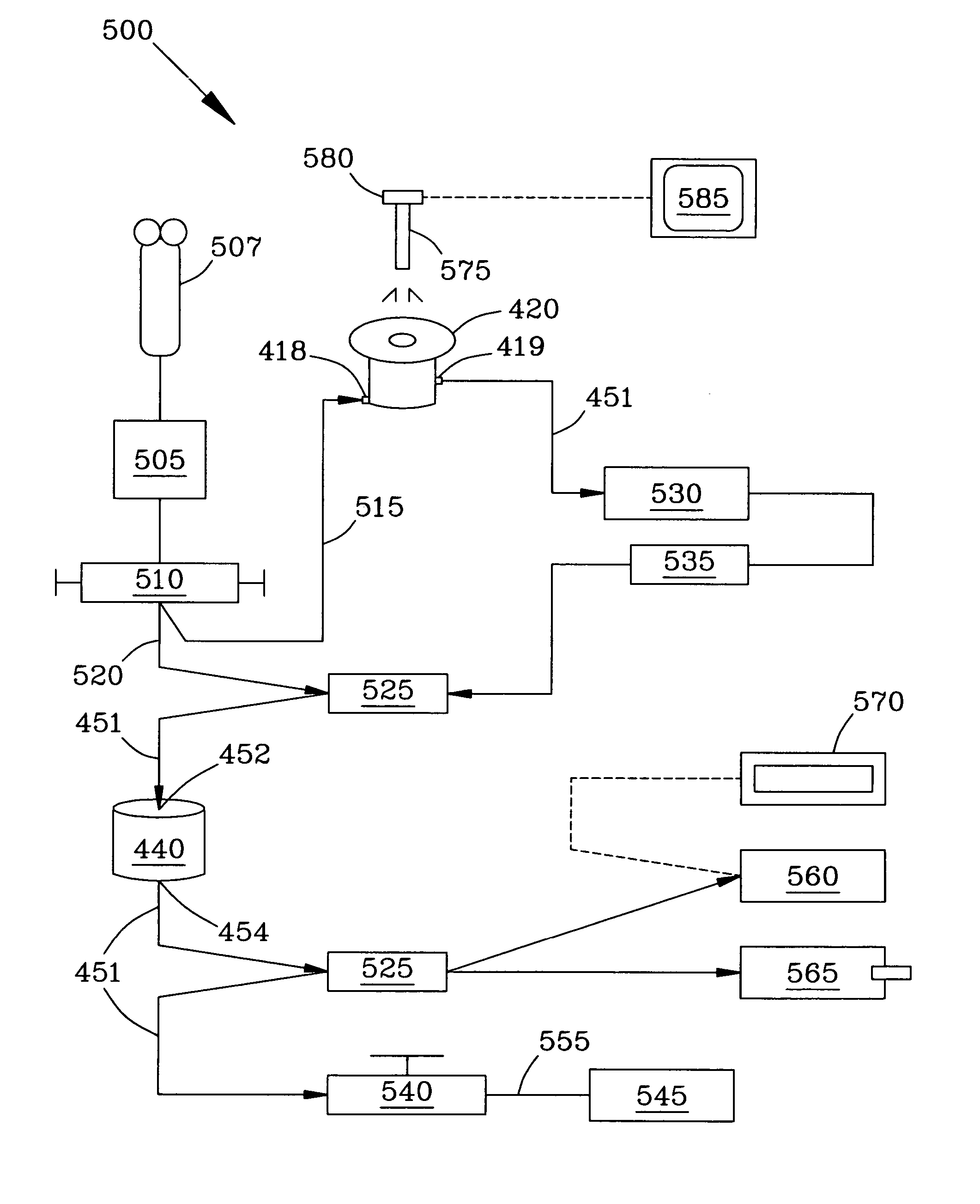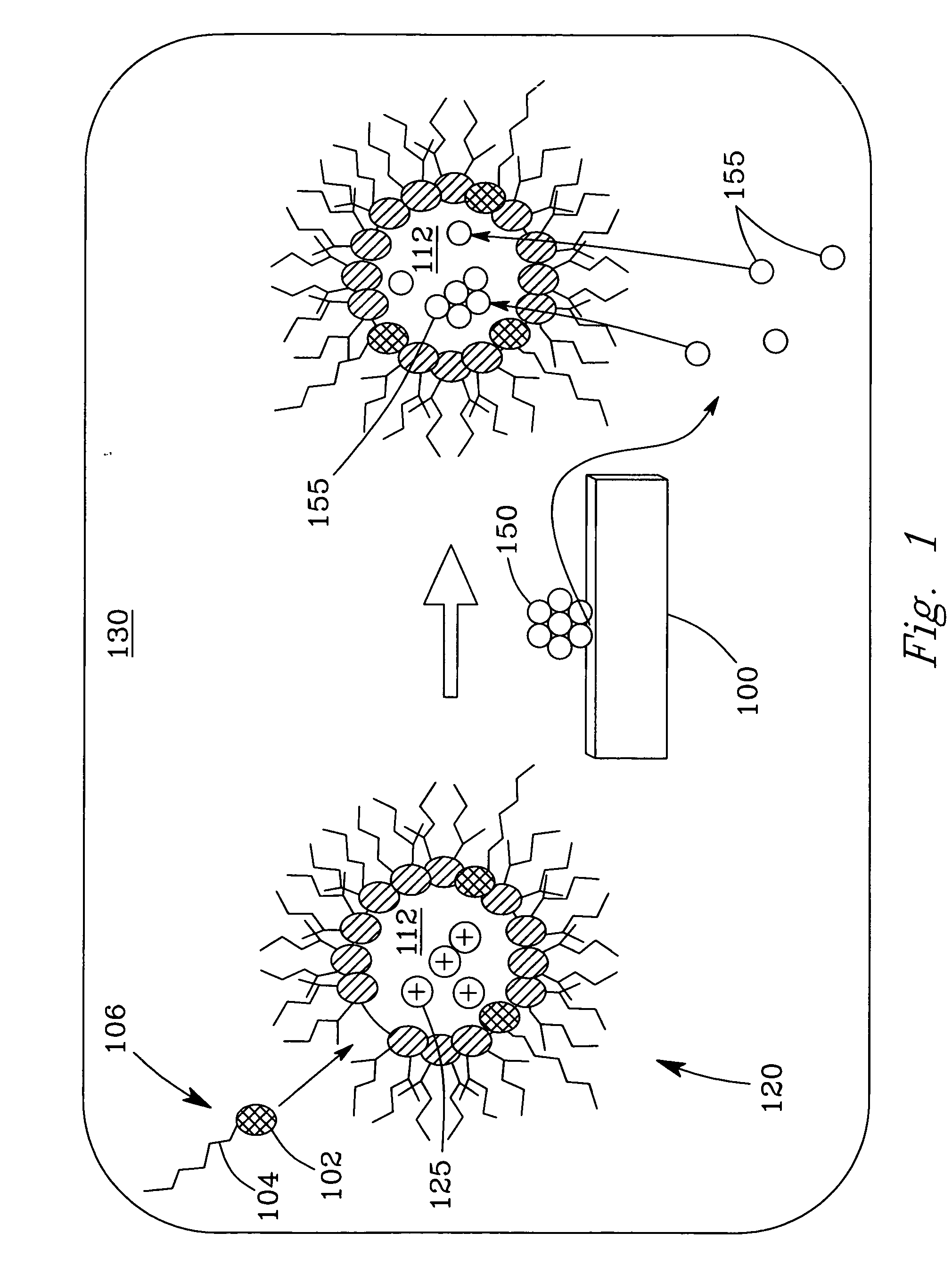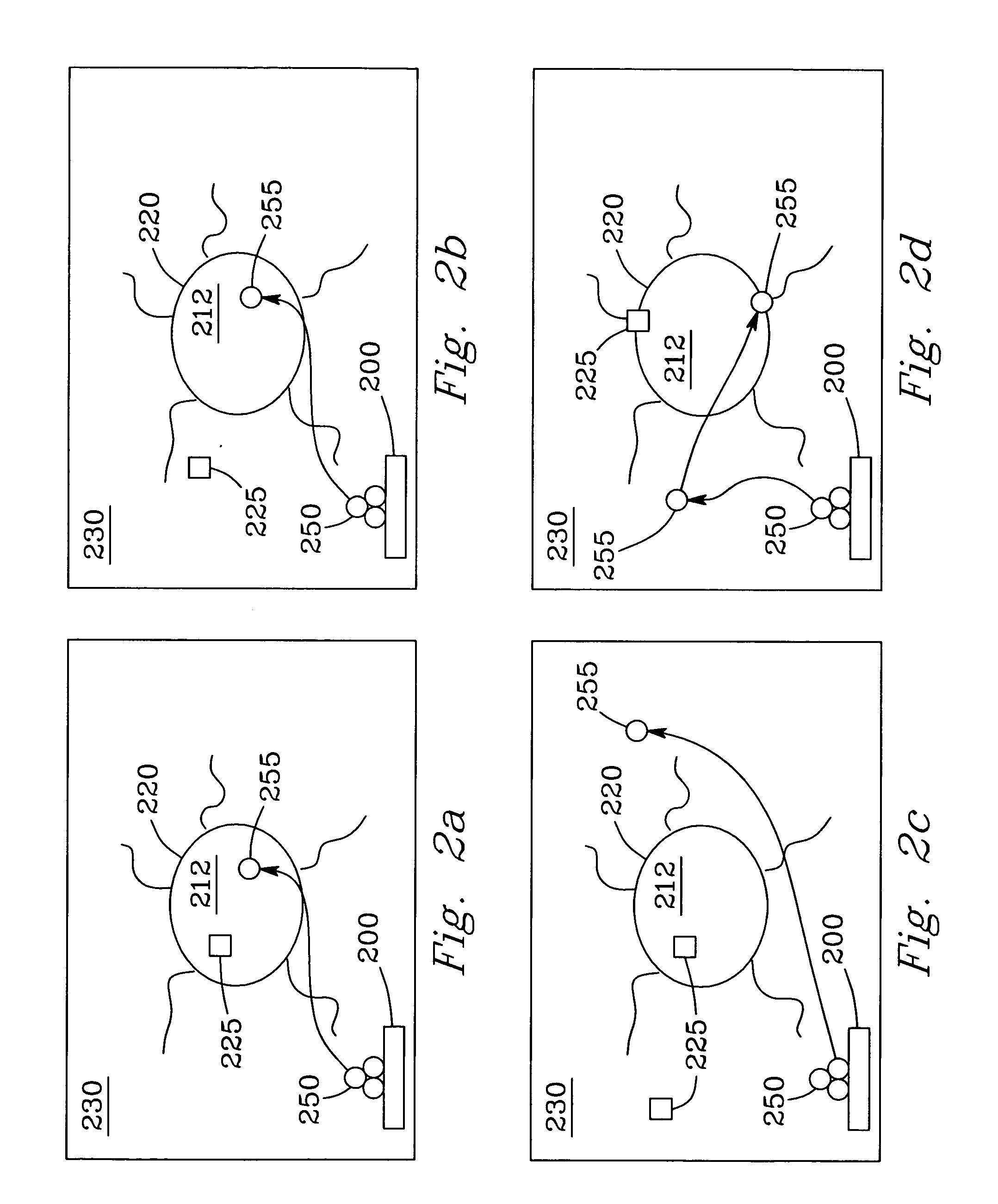Process and apparatus for removing residues from semiconductor substrates
- Summary
- Abstract
- Description
- Claims
- Application Information
AI Technical Summary
Benefits of technology
Problems solved by technology
Method used
Image
Examples
example 1
Reverse Micelle System Comprising Perfluoropolyether Phosphate Surfactant / Alkyl Sulfonate Co-Surfactant / Water
Residue Cleaning System
[0061]FIG. 6 illustrates a reactive reverse micelle(s) system according to a first embodiment of the present invention. Illustrated is a perfluoro-poly-ether (PFPE) phosphate surfactant / alkyl-sulfonate (AOT) co-surfactant / water system for removing etch residues 650 and non-metal residues 650 found to be tenacious and problematic residues for semiconductor and / or wafer substrate surface processing. This system has very attractive attributes for commercial processing including very low quantities of modifiers, very low volatility, ease of fluid recovery, low toxicity, minimal CD changes, and high speed cleaning. Cleaning occurs preferably in a time below about 15 minutes per wafer on average, and more preferably in less than about 5 minutes.
[0062] The system of the present embodiment comprises reactive reverse micelles 620 or reactive aggregates 620 co...
example 2
Reverse Micelle System Comprising Perfluoropolyether Ammonium Carboxylate Surfactant / Hydroxylamine / Water
Residue Cleaning System
[0066]FIG. 8 illustrates a reactive micelle system according to a second embodiment of the present invention. Illustrated is a PFPE-ammonium carboxylate / hydroxylamine system for removing etch and non-metal residues 850 found to be tenacious and problematic residues for semiconductor substrate and wafer surface processing.
[0067] The system of the instant embodiment comprises reactive reverse micelles 820 or reactive macro-molecular aggregates 820 comprising a fluorinated reverse micelle-forming surfactant, perfluoro-poly-ether (PFPE) ammonium carboxylate 806, in a densified CO2 phase 830. The surfactant 806 comprises a carboxylate headgroup 802 and a perfluoro-poly-ether (PFPE) tail 804. The carboxylate headgroups 802 align in close proximity to surround and form the inner polar core 814 of the aggregate 820. The PFPE tail 804 provides solubility in the de...
example 3
Reverse Micelle System Comprising Fluorocarbon Phosphate Acid Surfactant / Alkyl Sulfonate Co-Surfactant / Benzotriazole (BTA) / Water
Metal Residue Cleaning System
[0075] In a third embodiment of the present invention, a surfactant / co-surfactant / corrosion inhibitor / water system has been shown to be effective for removing metal residues (e.g., Cu, Fe, Al, etc.) found to be tenacious and problematic residues for semiconductor (e.g., silicon) substrate and wafer surface processing. The instant system has very attractive attributes for commercial processing including very low quantities of modifiers, very low volatility, ease of fluid recovery, low toxicity, minimal CD changes, and high speed cleaning (less than about 5 minutes per wafer on average).
[0076] Testing was conducted on a porous low-K dielectric (LKD) “barrier-open” (BO) wafer coupon 600 (e.g., LKD BO) having significant levels of copper residue 650. The system of the present embodiment is composed of reactive reverse micelle(s) ...
PUM
| Property | Measurement | Unit |
|---|---|---|
| Temperature | aaaaa | aaaaa |
| Temperature | aaaaa | aaaaa |
| Fraction | aaaaa | aaaaa |
Abstract
Description
Claims
Application Information
 Login to View More
Login to View More - R&D
- Intellectual Property
- Life Sciences
- Materials
- Tech Scout
- Unparalleled Data Quality
- Higher Quality Content
- 60% Fewer Hallucinations
Browse by: Latest US Patents, China's latest patents, Technical Efficacy Thesaurus, Application Domain, Technology Topic, Popular Technical Reports.
© 2025 PatSnap. All rights reserved.Legal|Privacy policy|Modern Slavery Act Transparency Statement|Sitemap|About US| Contact US: help@patsnap.com



